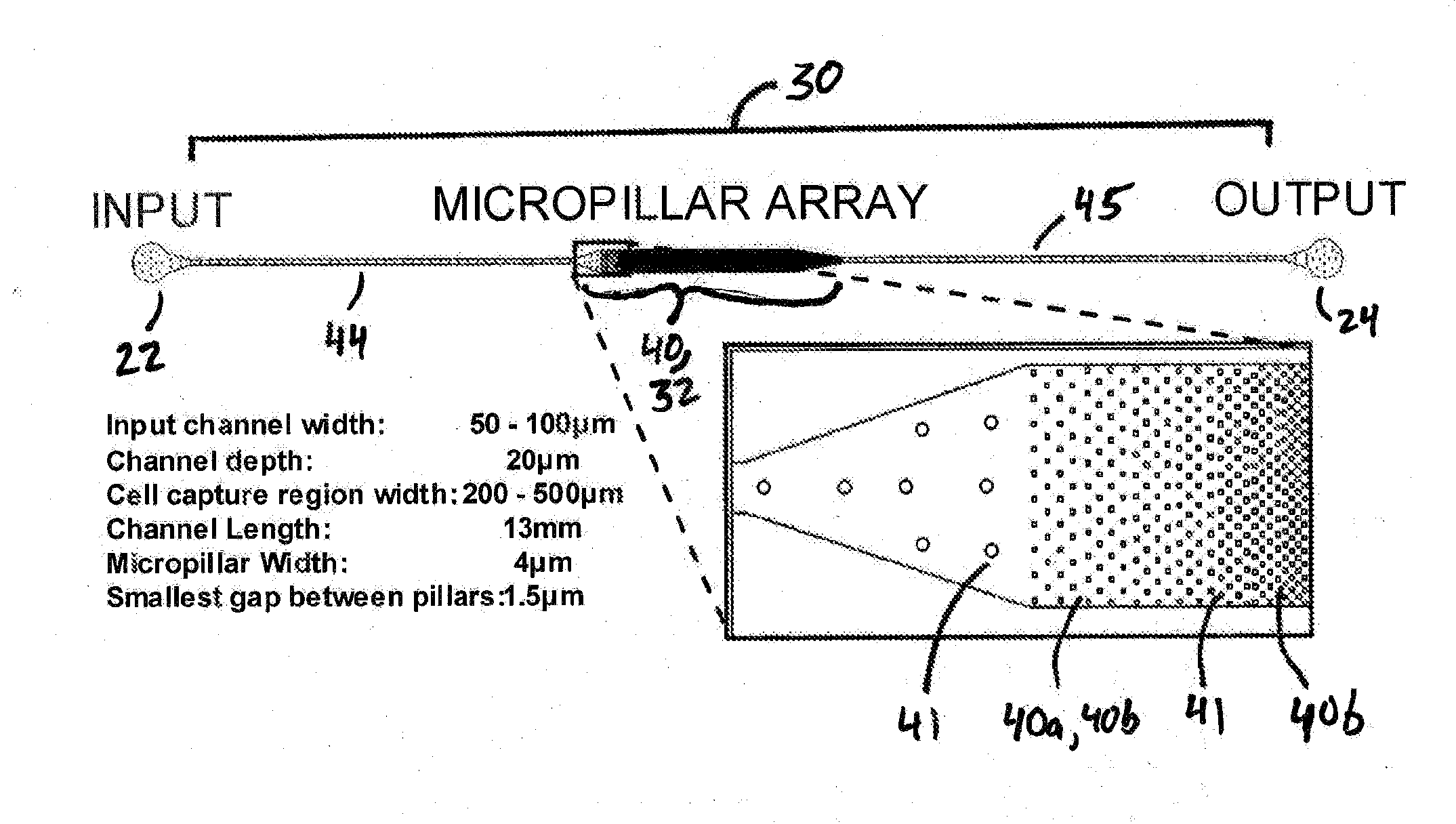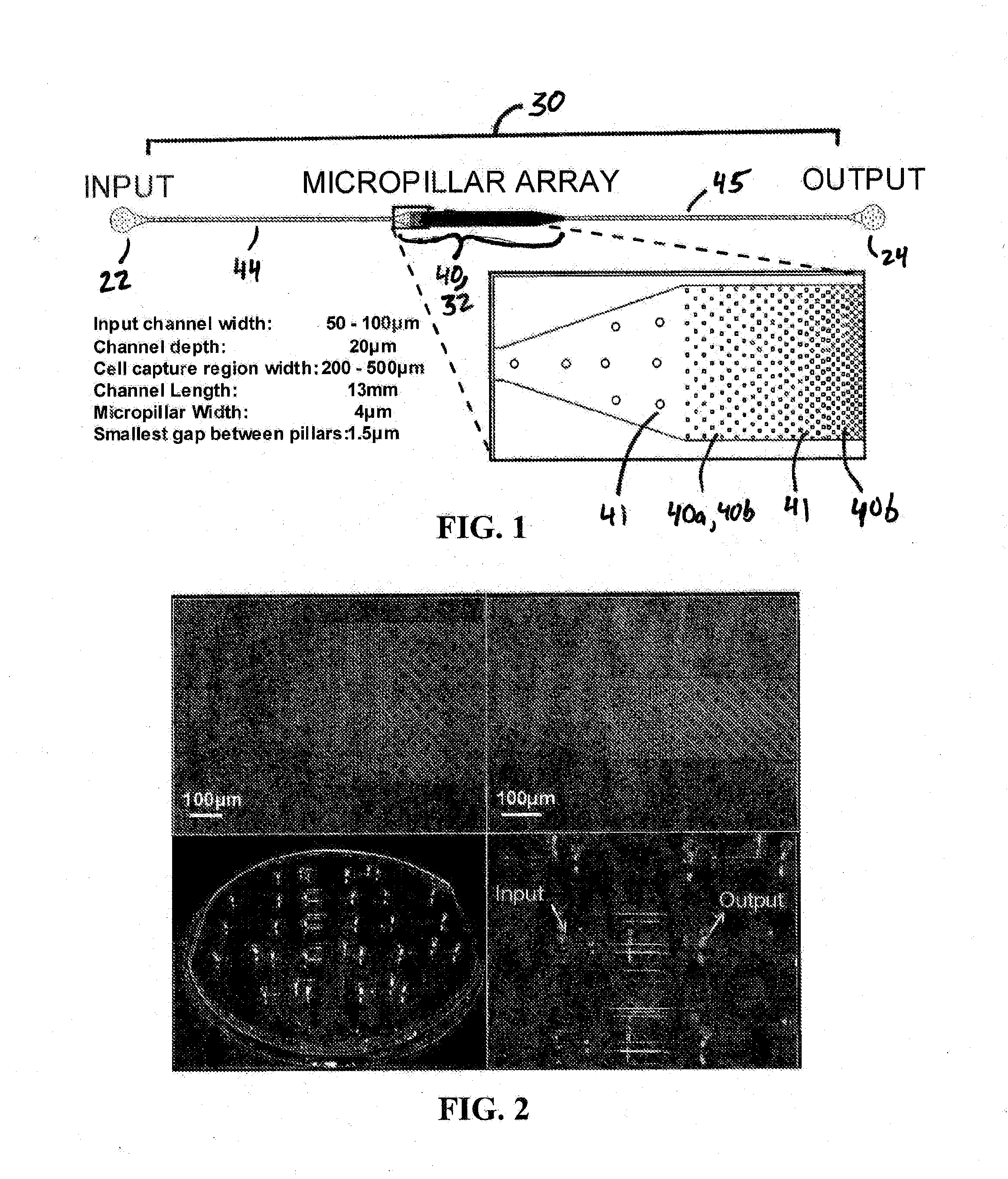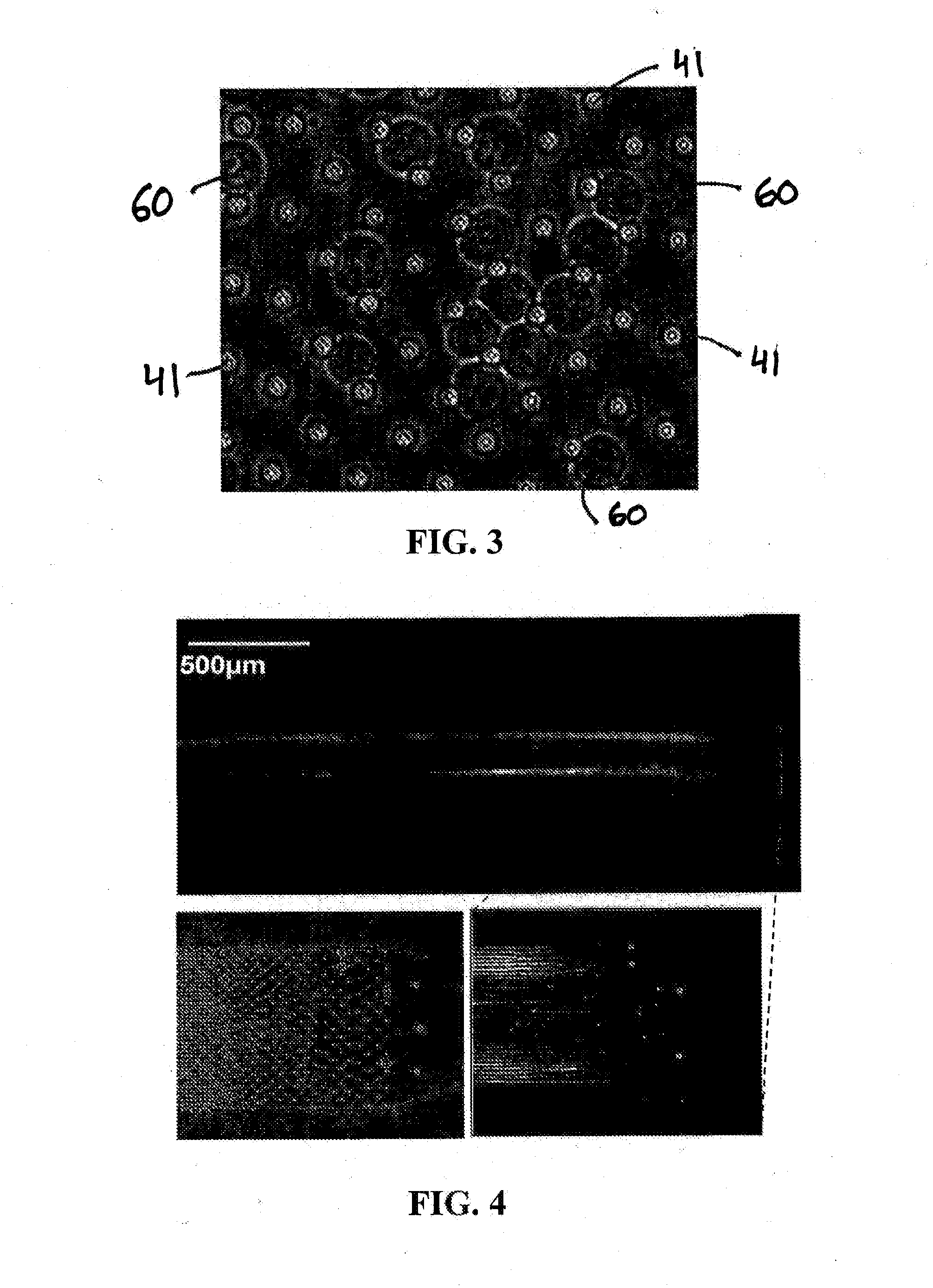Microfluidic device for extracting, isolating, and analyzing DNA from cells
a microfluidic device and cell technology, applied in the direction of nucleic acid reduction, filter regeneration, electrolysis, etc., can solve the problems of inability to efficiently extract and purify dna from a few cells, let alone a single cell, and an appreciable fraction of genomic dna is always lost, so as to facilitate single-molecule analysis, prevent inadvertent loss during sample manipulation, and reduce background fluorescence
- Summary
- Abstract
- Description
- Claims
- Application Information
AI Technical Summary
Benefits of technology
Problems solved by technology
Method used
Image
Examples
example 1
Integrated Microfluidic Device for DNA Extraction, Purification and Single-Molecule Fluorescence Analysis
[0106]This example describes one embodiment of a microfluidic device of the present invention for use in, inter alia, extracting, isolating, and analyzing DNA from cells.
[0107]A polydimethylsiloxane (PDMS) microfluidic device for extraction and purification of genomic DNA from small cell populations was developed. MO-91 cells (hematopoietic stem cells infected with myeloid leukemia) were trapped in a two-dimensional array of micropillars in a microfluidic channel and lysed in sodium dodecyl sulfate (SDS) buffer. Long DNA strands released from the lysed cells remained immobilized in the microarray by hydrodynamic forces while the cellular debris was washed away. The purified DNA was then released from the microarray by enzymatic fragmentation under continuous fluidic flow and collected for off-chip analysis by gel electrophoresis and fluorospectrometry. Greater than 95 percent (>9...
example 2
Microfluidic Extraction, Elongation, and Hybridization of Human Chromosomal DNA from Single Cells
[0115]This example reports on one embodiment of the present invention and in particular a microfluidic device for extraction, purification, elongation, and hybridization of human chromosomal DNA from single cells. Single cells were captured in a two-dimensional array of pillars in a microfluidic polydimethylsiloxane (PDMS) channel and lysed with an ionic surfactant. Megabase-long DNA strands released from the cells were trapped in the micropillar array and elongated under hydrodynamic flow up to 27 mm in length. The physical trapping of the chromosomal DNA allows the efficient removal of other cellular components from the solution by simple washing. The elongated DNA extracted from single cells was hybridized using FISH techniques. DNA from small cell populations was released from the device by enzymatic fragmentation with restriction endonucleases under continuous flow and collected for...
example 3
PDMS Microfluidic-Fused Silica Nanofluidic System for Extracting and Analyzing DNA from Human Hematopoietic Stem Cells
[0160]As shown in FIG. 14, a time trace from a single cell experiment using human hematopoietic stem cells (MO-91) was obtained using a coupled PDMS microchannel / fused silica nanochannel device, which corresponds to one embodiment of a microfluidic-nanofluidic system of the present invention. FIG. 14 illustrates that, using a microfluidic-nanofluidic system of the present invention, one can flow and detect DNA from a single cell into nanochannels, the DNA having been obtained using a PDMS microfluidic device of the present invention. This technique can be used for applications such as intensity / photon count based fragment sizing from single cells, DNA methylation analysis based on restriction enzymes (HPAII and MSPI) or methyl binding domain (MBD), and coincident detection of epigenetic marks from single cells.
[0161]The experiment was generally performed as follows: ...
PUM
| Property | Measurement | Unit |
|---|---|---|
| Length | aaaaa | aaaaa |
| Flow rate | aaaaa | aaaaa |
| Size | aaaaa | aaaaa |
Abstract
Description
Claims
Application Information
 Login to View More
Login to View More - R&D
- Intellectual Property
- Life Sciences
- Materials
- Tech Scout
- Unparalleled Data Quality
- Higher Quality Content
- 60% Fewer Hallucinations
Browse by: Latest US Patents, China's latest patents, Technical Efficacy Thesaurus, Application Domain, Technology Topic, Popular Technical Reports.
© 2025 PatSnap. All rights reserved.Legal|Privacy policy|Modern Slavery Act Transparency Statement|Sitemap|About US| Contact US: help@patsnap.com



